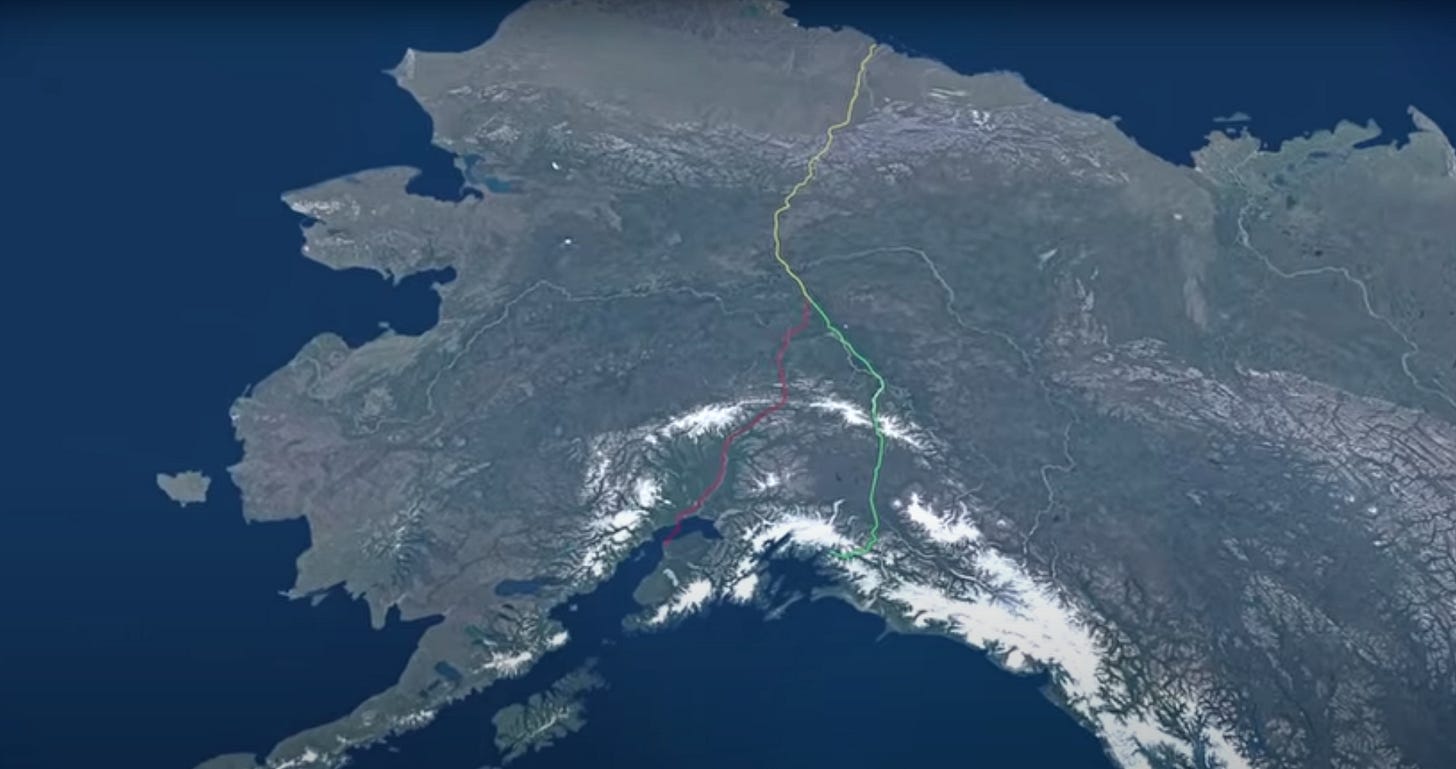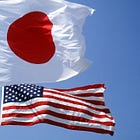Yesterday, Friends of the Earth Japan published a well-reasoned open letter to Prime Minister Ishiba, urging him not to enter into an agreement to buy LNG from the Alaska LNG project. The letter is signed by 154 groups, both in Japan and elsewhere. The letter is also available in Japanese.
I wrote about the Alaska LNG project in the last few months, suggesting that a deal to import from it would be unwise for Japan. But this open letter makes this case much more powerfully than I have, so in the spirit of amplifying its reach, I highlight its argument in this post.
[T]he US’s aim is to pressure the leaders of Japan, South Korea, Taiwan, Thailand, India and others to invest in this egregious project. Investing in this costly and climate-wrecking project will harm local communities, the environment and the planet, and poses a serious economic burden for the Japanese economy. We request that the Japanese leaders refuse support for the project. — FOE Japan’s open letter
What’s the Alaska LNG project again?
The Alaska LNG project, also known as the Alaska Nikiski LNG Project Pipeline, is a proposed fossil gas pipeline that will be connected to an LNG export terminal. The pipeline would transport gas from the North Slope fields via a 1,300km1 pipeline for domestic use and for export to Asia. But as the word proposed suggests, none of this is built yet.

The project has been planned since 2016 by the Alaska Gasline Development Corporation (AGDC), which has been the only entity keeping the project float as private investors existed the project amidst ballooning costs and declining energy prices.
In the press release accompanying the open letter, Sarah Furman of Fairbanks Climate Action Coalition sums it up the project well: “The Alaska LNG Pipeline project is bad economics, bad for the planet and bad for Alaskans.”
Let’s further unpack why the project is bad in all of these ways.
Prohibitive Costs
As FOE Japan’s letter explains, the budget of the project has fluctuated dramatically, with current cost estimates reaching at least USD 44 billion. These costs are likely to rise further thanks to increased construction costs and tariffs on Chinese steel.
It’ll be so costly that no foreign entity has agreed to buy it, despite many attempts by Alaskan officials and Trump 1.0 and 2.0 to lure Asian countries to sign off-take agreements. Japan’s gas industry is certainly deeply skeptical. Japan Gas Association’s Chair and CEO Uchida warned Prime Minister Ishiba’s cabinet that “there is a possibility that [President Trump] will ask us to buy Alaska LNG” and that Alaska LNG would be “twice the cost of conventional LNG development.”
Private investors’ allergic reaction means that the project won’t move forward without hefty subsidies from Japan or the US (which has already sunk millions of taxpayer money into it).
Japan Doesn’t Need More LNG
Even without considering the astronomical costs, there’s the fact that Japan doesn’t actually need any more LNG. Japan’s energy consumption, including domestic gas demand, has been steadily declining year-on-year.
Today, Japanese companies purchasing LNG are facing a surplus, reselling 40% of the LNG they handle to overseas markets. Although this is a strategic shift on the part of these energy companies, this means that Japan doesn’t need another source of (costly) LNG from an energy access or energy security perspective. What’s more, the Alaska LNG project won’t start producing until 2030 at the earliest. Japan’s energy demand will have diminished even further by then.
Climate & Environmental Impacts
The AGDC claims that “Alaska LNG will use clean, energy-efficient, and safe production methods.” But Earth Justice estimates that the project’s capacity would result in over 50 million metric tons of CO2 emissions annually. Because I don’t see any information about mitigation measures associated with the proposed project, I’m inclined to believe Earth Justice more than AGDC.
The letter points out a host of other environmental damages. The North Slope, the drilling site where the gas will originate, is located near the Arctic National Wildlife Refuge, one of the most pristine areas with diverse wildlife including polar bears facing extinction. The gas would also be exported from a marine terminal on the Cook Inlet in Nikiski, a sensitive water body that offers critical habitat for endangered beluga whales. Building and maintaining this infrastructure means damaging these ecological areas.
So why are Japanese leaders considering it?
Economically foolish. Unnecessary. Environmentally damaging. So why would Japanese leaders even consider importing from the Alaska LNG project?
There’s an energy security argument that’s often deployed in favor of this potential deal. A commentary in Nikkei Asia summed up this argument nicely. It goes something like this: Because of its geographic proximity, LNG from the Alaska project would take only seven days to reach Japan, half the time it takes LNG from the Gulf of Mexico shipped through the Panama Canal. What’s more, it wouldn’t have to pass through geopolitical chokepoints like the Strait of Hormuz or the South China Sea. Importing from Alaska would allow Japan to transition away from Russian gas and oil, the argument goes.
It’s not clear whether Japan’s political leaders have adopted this energy security argument. For all I know, they’ve been explicitly and consistently non-committal, with statements like "we will carefully assess whether it is economically viable and sustainable." They know it won’t be economically viable. They’re simply buying time.
Time for what? Tariff negotiations. That’s the real crux of the issue. Japanese leaders haven’t refused a deal outright because Alaska LNG is a bargaining chip. That’s how the Trump administration is treating it and Japan knows it too.
Since Prime Minister Ishiba met with Trump for the first time in February, Trump has been touting a “joint venture” with Japan on the Alaska LNG project and pressuring Japanese negotiators to go along. He’s done the same with South Korea and Taiwan, with the latter more willing to buy than the other two countries. The Trump administration has hinted that it may lower tariffs in exchange for an LNG deal.
Treat the Alaska LNG project as a bargaining chip for negotiating the tariffs changes the key question. Rather than “Will investing in and buying from Alaska LNG economical, environmentally sustainable, and strengthen energy security?” the question becomes “Will the cost of an Alaska LNG deal outweigh the cost of tariffs?”
The Nikkei Asia commentary is smart on this point. The blow from Trump’s tariffs on Japanese cars is expected to be in the trillions of yen. The separate “retaliatory tariffs” for US trade partners including Japan (delayed until July 9 as of the time of this writing) could lower Japan’s GDP by 0.6%. “Increased purchases of American LNG and investments in the Alaska project,” the writer argues, “are some of the few bargaining chips Japan has in tariff talks.”
Heed the Letter’s Warning
Be that as it may, can Trump be trusted to honor a deal of this sort? As Hiroki Osada, an FOE Japan campaigner, said in the press release accompanying the open letter: this deal would be “only to please a president who will never be pleased.” He has a point.
Thank you for reading Power Japan. If you’d like to support my work, consider becoming a free or paid subscriber.
If you found this post insightful, also consider sharing it the people in your life.
Questions or comments? I’d love to hear from you in the comments section or the subscriber chat.
That’s 800 miles for you Americans.






